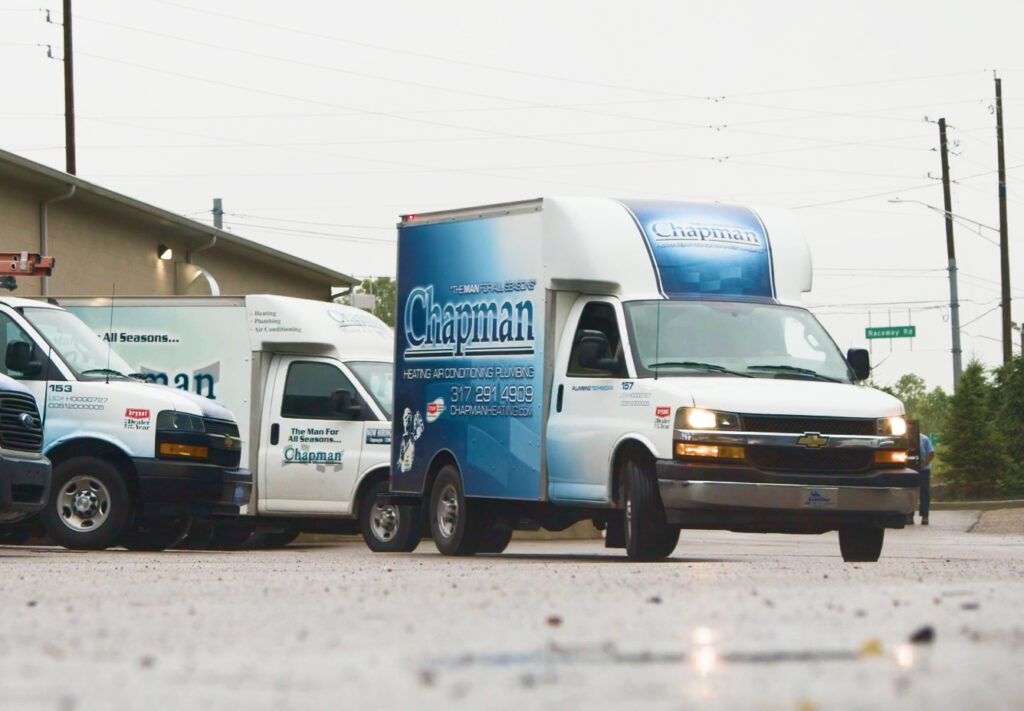Throughout the year in Indianapolis and across Central Indiana, the temperature will fluctuate from hot and humid in the summer to frigid and below-freezing in the winter. If you’re constantly adjusting and cranking the temperature on your thermostat, it will lead to higher-than-expected utility bills and overall frustration and discomfort.
Finding ways to keep your house cool in the summer and warm in the winter will help you deal with the extremes, but it’s still important to know the best temperature for your home.
There is a lot of conflicting information out there about the best thermostat setting for winter and summer that will keep you comfortable and lower your electricity bill. One of the best and most trusted sources of information regarding the proper thermostat settings is the U.S. Department of Energy (DOE).
Keep reading to learn more about what temperature to set the thermostat at for every season.
Recommended Thermostat Settings for Year-Round Comfort
What Should My Thermostat Be Set At in the Winter?
In the winter, the DOE recommends keeping your thermostat at 68 degrees Fahrenheit while you are awake and at your house. This temperature not only keeps your house warm but should also help prevent your pipes from freezing.
However, to help save money and be more energy efficient, it’s an option to adjust the temperature depending on where you are and what you’re doing. Specifically, the DOE suggests turning the temperature on the thermostat down while you're sleeping or out of the house.
Even by lowering the thermostat by seven to ten degrees for eight hours a day, you can see up to a ten percent decrease in your annual heating expenses. This figures out to be as much as one percent for each degree lowered.
It’s important to remember that percentage change goes both ways. If you’re freezing in your house when the thermostat is set to 68 degrees Fahrenheit, you can expect a one percent increase in your heating bill.
What Should My Thermostat Be Set At in the Summer?
Summers in Indiana can be brutally hot. But, like your heat, you should hesitate before cranking your air conditioner to try to cool your house down faster. This will only waste energy and put extra stress on your appliances, which over time, can decrease its operational efficiency. Plus, it’s not proven to be effective in cooling your home down any faster.
During the summer, the biggest challenge is finding the right temperature that balances your comfort with saving money and energy.
That is why the DOE recommends setting your thermostat to 78 degrees Fahrenheit when you are home during the summer. While this might make your house a little warmer than you're used to, it does help reduce the cost of your energy bill significantly.
When you leave during the summer, do not be afraid to crank up your thermostat setting between 85 to 88 degrees Fahrenheit. The DOE estimates this can help you save as much as ten percent on cooling costs annually.
What Should My Thermostat Be Set At in the Fall & Spring?
During the fall and spring, you’re less likely to experience the extreme temperatures and conditions associated with winter and summer. However, the weather can still be unpredictable, which can make setting your thermostat a little tricky.
If you have a programmable thermostat, we recommend the following thermostat settings during the spring and fall:
- During warmer periods, set the thermostat to 78 degrees during the day, and 86 degrees if you leave the house.
- During cooler times, set the thermostat to 68 degrees while you’re at home and awake, but lower it to 65 degrees when you’re asleep. You can even lower it further to 60 degrees when you leave the house.
Even with a programmable thermostat, it is best to place the device on “auto” mode during the spring and fall. This allows you to set the desired temperature as the weather changes and makes it easier to lower your energy bill.
Why You Should Adjust the Temperature When You Leave the House
One of the keys to maintaining a comfortable temperature in your home while saving money and being energy efficient is to lower the temperature on the thermostat when you leave the house.
Our team of HVAC professionals recommends the “8 is Great” rule, which states:
Adjust your temperature by eight degrees when you know you’re leaving the house for at least two hours. For example, if your thermostat is set at 68 degrees Fahrenheit while at home during the winter, turn it down to 60 degrees Fahrenheit before heading out to work, school, or running errands.
Some people find it difficult to remember to adjust the thermostat as they’re running out the door. Others forget to turn it back once they arrive home and soon find themselves freezing or sweating.
Benefits of a Programmable Thermostat
This is where a programmable thermostat comes in handy. It allows you to automate the process. With a programmable thermostat, you have the ability to just set the times and temperature settings you want without having to think about it ever again. This is especially helpful if you have a set schedule.
For example, you leave the house for work every day at 8:00 a.m. and return by 5:00 p.m. You can program the thermostat to adjust during the hours you are away while ensuring it’s back to your preferred temperature before you get back home.
Let Chapman Help You Stay Comfortable Year-Round
Whether it’s learning the best temperature settings, or which programmable thermostat is right for you, Chapman Heating, Air Conditioning & Plumbing is here to help. Contact us today to learn more about your home’s heating and cooling system so you can stay comfortable no matter the season.
Garbage disposals are an essential kitchen appliance. They help us clean plates and bakeware without making trips back and forth to the trash can. But like all appliances, garbage disposals can break down or stop working suddenly. When that happens, who do you call to fix your garbage disposal when it’s not working?
These appliances are unique because garbage disposals require a mix of electrical and plumbing knowledge, which might make you question who to call to fix your issue. However, knowing who to call can save you time and money and get your kitchen operating again in no time.
Chapman Heating, Air Conditioning, and Plumbing specializes in plumbing services with a solid background knowledge of electrical systems. Our team of Indianapolis plumbers have the expertise and know-how to install or replace fixtures, conduct routine maintenance, or fix any plumbing problem, including top-notch garbage disposal repair.
Why You Should Call a Plumber for Your Garbage Disposal Problem
Even though garbage disposals are powered by electricity, plumbers will be the most effective when it comes to resolving your garbage disposal issue. Most likely, a plumber installed your garbage disposal, and they have the knowledge to solve the majority of garbage disposal problems, even electrical ones.
In the event that your garbage disposal is clogged or jammed, an electrician might not know the most effective way to clear the clog or locate and eliminate the source of the problem. Even if you’re sure you have an electrical issue with your garbage disposal unit, call a plumber first. They have more experience with garbage disposals and can provide fast, effective solutions.
Signs You Should Call a Plumber About Your Garbage Disposal Problem
The type of garbage disposal issue you’re experiencing may determine if you need to call a plumber at all. Some garbage disposal problems can be fixed by properly resetting the disposal or removing a clog. However, some issues require the knowledge of an experienced professional.
Your garbage disposal is responsible for processing different kinds of food waste, and as a result, it can wear down and break over time. Here are some of the most common warning signs that it’s time to call in a plumber:
- Age: Like all home appliances, garbage disposals have a limited lifespan, but many are unsure when to replace their garbage disposal. They typically need to be replaced every eight to 15 years, depending on the brand and model.
- Ineffective Grinding: If you suspect that there is a garbage disposal issue that needs to be addressed, run the unit and water for approximately 30 seconds. Then, reach into the disposal to check if there are waste items that have not been removed. If so, that might mean your blades have gone dull and need to be replaced.
- Leaking Under the Sink: Especially as your unit ages, you’ll want to routinely check for leaks under your sink, including any active dripping or puddles. Typically, disposals leak only while the water is on or while the unit is running. A leak usually indicates a hose or seal problem, which requires a plumber to remove the unit.
- Persistent Odors: Food waste is primarily what goes down your disposal. If it is not functioning properly, you might notice an unpleasant odor coming from the drain and/or garbage disposal. We recommend cleaning the sink and unit with natural cleaners and odor removers such as baking soda. If the odor persists, have the unit inspected by a professional.
- Unresponsive: If you flip the power switch and nothing happens, that means you may have an electrical issue rather than a plumbing problem. However, it’s still best to have your unit assessed by a plumber who has the knowledge to reconnect the system and restart your unit. Do not attempt to work on an electrical problem in your garbage disposal on your own.
Garbage Disposal DIY Fixes
Here are some common garbage disposal problems and how to troubleshoot them yourself:
- Garbage Disposal Won’t Turn On: First, make sure your garbage disposal is plugged in. Next, try hitting the reset button on the bottom of the disposal. If the disposal has been tripped, this button will pop out. Popping it back in should help. If neither is the case, check your circuit breaker to see if that has been tripped, or try resetting the circuit.
- Disposal Is Humming But Does Not Grind: This most likely means your disposal is jammed. Make sure the garbage disposal is off, and then get a flashlight to see if there is something blocking the blades of the disposal. Use a spoon or a long instrument to see if you can clear the blockage. Never stick your fingers down a garbage disposal.
- Garbage Disposal Drains Slowly: If water is backing up or draining too slowly, this most likely means that your garbage disposal is clogged. Try to remove what waste you can from the disposal. You can also disconnect the drain trap to better remove the clogged items.
- Garbage Disposal Is Leaking: There are several connections to your garbage disposal that can leak. Find the source of the leak, and get a wrench to tighten bolts.
If you’ve tried to fix it yourself and are still having issues, it’s time to give a professional Indianapolis plumber a call.
How to Avoid Garbage Disposal Issues
In order to keep your garbage disposal in working order, there are a few rules you should live by when operating your garbage disposal:
- Always run cold water when operating your garbage disposal.
- Never use chemical drain cleaners to unclog your garbage disposal. Not only are they not effective, but they also add toxic liquids to your kitchen sink and pipes.
- Grind up lemon peels and ice cubes to keep your garbage disposal from developing odors.
- Do not grind fibrous foods like coffee grounds, eggshells, potato peels, bones, or onion skins.
Whether it’s repairing your garbage disposal or having a new one installed, Chapman can help. Schedule your garbage disposal service in Indianapolis and the surrounding area with the experts at Chapman today.








